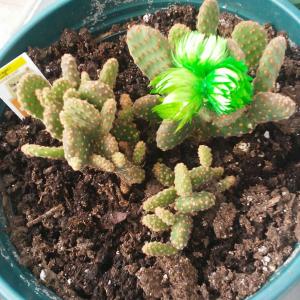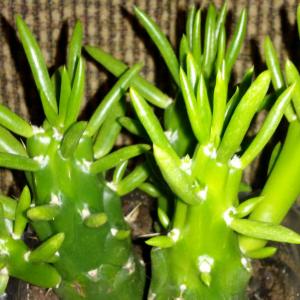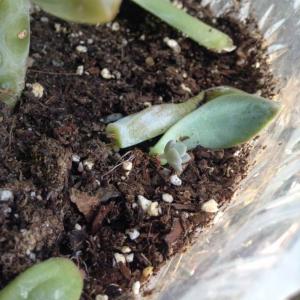文章
Dummer. ゛☀
2017年08月26日

Have you ever looked at a stand of cattails and wondered is the cattail plant edible? Using edible parts of a cattail in the kitchen is nothing new, except maybe the kitchen part. Native Americans routinely harvested the cattail plant for use as tinder, diaper material, and, yes, food. Cattail starch has even been found on Paleolithic grinding stones dating back tens of thousands of years. So what parts of cattail are edible and how do you use cattails in the kitchen?
What Parts of Cattail are Edible?
Cattails are incredibly unique looking plants and, in fact, are actually grasses. There are dozens of species found growing in the Northern Hemisphere and Australia with the largest and most common being Typha latifolia. They can be found in some marshy areas in such proliferation it’s no wonder that ancient man discovered that the cattail plant is edible.
Many parts of these tall, reedy plants can be ingested. Each cattail has both male and female flowers on the same stalk. The male flower is at the top and the female is below. Once the male has released all of its pollen, it dries up and drops to the ground, leaving the female flower atop the stalk. The female flower looks much like a fuzzy hotdog on a stick and is commonly seen in dried flower arrangements, but that isn’t all it’s useful for.
Before the male pollinates the female in the spring, the pollen can be collected and used in combination with traditional flower to make pancakes or muffins. The cattail pollen is a great source of protein. The female flower is green prior to pollination and at this juncture can be harvested, cooked and eaten with butter, sort of a marsh corn on the cob. The green flowers can also be used in soups or frittatas or even made into cattail flower refrigerator pickles.
Additional Edible Parts of Cattail Plants
Young cattail shoots and roots are also edible parts of cattail plants. The young shoots are found once the outer leaves are stripped and can then be used stir fried or sautéed. They are referred to as Cossack asparagus, although the tender, white shoots taste more like cucumbers. The tough, fibrous roots can also be harvested. They are then dried and ground into flour or boiled down with water to separate the starch. The starch is then used much like corn starch to thicken gravies and sauces. Care should be taken when using the edible root parts of a cattail, however. They act as a filtration system for the plant and if in polluted water, will absorb those pollutants which could then be passed along to you as you ingest them.
All in all, cattails may be the perfect survival food. They are also easy to harvest and a supply can be laid aside for later use as well as for medicinal purposes, clothing and shelter – altogether a truly remarkable plant.

What Parts of Cattail are Edible?
Cattails are incredibly unique looking plants and, in fact, are actually grasses. There are dozens of species found growing in the Northern Hemisphere and Australia with the largest and most common being Typha latifolia. They can be found in some marshy areas in such proliferation it’s no wonder that ancient man discovered that the cattail plant is edible.
Many parts of these tall, reedy plants can be ingested. Each cattail has both male and female flowers on the same stalk. The male flower is at the top and the female is below. Once the male has released all of its pollen, it dries up and drops to the ground, leaving the female flower atop the stalk. The female flower looks much like a fuzzy hotdog on a stick and is commonly seen in dried flower arrangements, but that isn’t all it’s useful for.

Before the male pollinates the female in the spring, the pollen can be collected and used in combination with traditional flower to make pancakes or muffins. The cattail pollen is a great source of protein. The female flower is green prior to pollination and at this juncture can be harvested, cooked and eaten with butter, sort of a marsh corn on the cob. The green flowers can also be used in soups or frittatas or even made into cattail flower refrigerator pickles.
Additional Edible Parts of Cattail Plants
Young cattail shoots and roots are also edible parts of cattail plants. The young shoots are found once the outer leaves are stripped and can then be used stir fried or sautéed. They are referred to as Cossack asparagus, although the tender, white shoots taste more like cucumbers. The tough, fibrous roots can also be harvested. They are then dried and ground into flour or boiled down with water to separate the starch. The starch is then used much like corn starch to thicken gravies and sauces. Care should be taken when using the edible root parts of a cattail, however. They act as a filtration system for the plant and if in polluted water, will absorb those pollutants which could then be passed along to you as you ingest them.

All in all, cattails may be the perfect survival food. They are also easy to harvest and a supply can be laid aside for later use as well as for medicinal purposes, clothing and shelter – altogether a truly remarkable plant.
1
0
文章
Dummer. ゛☀
2017年08月26日

Parsley is a very popular herb among gardeners. A classic garnish on so many dishes, it’s especially useful to have on hand, and since cutting stalks only encourages new growth, there’s no reason not to give parsley some space in your garden. It’s a well-known rule that some plants grow better next to others, however, and with parsley there’s no exception. Keep reading to learn more about plants that grow well with parsley, as well as those that don’t.
Parsley Companion Planting
Companion planting is the age old trick of knowing which plants grow better next to other plants. Some plants encourage certain others to grow, while others inhibit them. Plants that are mutually beneficial are called companions. Parsley is a great companion crop, encouraging the growth of plenty of plants around it. Of all the vegetables, asparagus benefits the most from having parsley nearby. Other plants that grow well with parsley include:
Tomatoes
Chives
Carrots
Corn
Peppers
Onions
Peas
All of these are mutually beneficial with parsley and should grow well nearby. Lettuce and mint don’t make good neighbors with parsley and should be kept far away from it. Maybe the most surprising parsley companion is the rose bush. Planting parsley around the base of the plant will actually make your flowers smell sweeter.
Specific pairings aside, parsley is good for all the plants in your garden because of the insects it attracts. Swallowtail butterflies lay their eggs on the leaves, encouraging a new generation of butterflies to grow up in your garden. Parsley flowers attract hoverflies, the larvae of which eat aphids, thrips, and other harmful insects. Some harmful beetles are also repelled by the presence of parsley. Companion planting with parsley is that easy. Get started today and enjoy the benefits of growing other plants with this wonderful herb.

Parsley Companion Planting
Companion planting is the age old trick of knowing which plants grow better next to other plants. Some plants encourage certain others to grow, while others inhibit them. Plants that are mutually beneficial are called companions. Parsley is a great companion crop, encouraging the growth of plenty of plants around it. Of all the vegetables, asparagus benefits the most from having parsley nearby. Other plants that grow well with parsley include:
Tomatoes
Chives
Carrots
Corn
Peppers
Onions
Peas
All of these are mutually beneficial with parsley and should grow well nearby. Lettuce and mint don’t make good neighbors with parsley and should be kept far away from it. Maybe the most surprising parsley companion is the rose bush. Planting parsley around the base of the plant will actually make your flowers smell sweeter.

Specific pairings aside, parsley is good for all the plants in your garden because of the insects it attracts. Swallowtail butterflies lay their eggs on the leaves, encouraging a new generation of butterflies to grow up in your garden. Parsley flowers attract hoverflies, the larvae of which eat aphids, thrips, and other harmful insects. Some harmful beetles are also repelled by the presence of parsley. Companion planting with parsley is that easy. Get started today and enjoy the benefits of growing other plants with this wonderful herb.
0
0
文章
Dummer. ゛☀
2017年08月26日

Pruning mint is a pleasant task, as the plants release a new burst of minty fragrance with each cut you make. You have two objectives when pruning the plant: to keep the bed healthy and to prevent it from flowering and going to seed. Flowering reduces the quality and potency of the leaves. Read on to find out when and how to prune mint plants. Never be afraid to pinch a few sprigs of mint when you need them, but if you need a large quantity of mint, wait until pruning time. If you want a low-growing bed of mint, you can keep it as short as 4 inches. This is a good height for mint grown in small containers. Otherwise, let it grow 8 to 12 inches tall before you prune it.
When to Prune Mint
You can sometimes get a light harvest from mint during the first year, but it’s generally best to wait until the second year, just before the plants bloom. After mint blooms, it loses some of its essential oil, making the leaves less fragrant and flavorful. Watch for the buds that indicate when the plant is about to bloom. Once buds appear, you can pinch them or cut back the plants. During the second year, you can cut the plants back two or three times. Trimming mint plants to the ground before winter is an essential part of preventing insect pests and diseases, such as anthracnose, that would otherwise overwinter in the plants.
How to Prune Mint
If you’re pruning mint during the growing season, cut the plants back by about half. This will remove the tips of the plant where the flowers would otherwise bloom and provide plenty of mint for fresh use, freezing or drying. When you perform mint plant pruning at the end of the year or end of season, cut them to within an inch of the ground. If you have a large bed, you can use a lawn mower.

When to Prune Mint
You can sometimes get a light harvest from mint during the first year, but it’s generally best to wait until the second year, just before the plants bloom. After mint blooms, it loses some of its essential oil, making the leaves less fragrant and flavorful. Watch for the buds that indicate when the plant is about to bloom. Once buds appear, you can pinch them or cut back the plants. During the second year, you can cut the plants back two or three times. Trimming mint plants to the ground before winter is an essential part of preventing insect pests and diseases, such as anthracnose, that would otherwise overwinter in the plants.

How to Prune Mint
If you’re pruning mint during the growing season, cut the plants back by about half. This will remove the tips of the plant where the flowers would otherwise bloom and provide plenty of mint for fresh use, freezing or drying. When you perform mint plant pruning at the end of the year or end of season, cut them to within an inch of the ground. If you have a large bed, you can use a lawn mower.
0
0




















